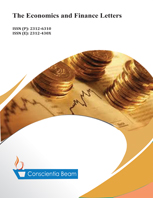Determinants of FDI inflows: Aggregate versus country-specific evidence from ASEAN-6
DOI:
https://doi.org/10.18488/29.v10i1.3319Abstract
This paper seeks to explore the determinants of foreign direct investment (FDI) inflows into six countries of the Association of Southeast Asian Nations (ASEAN), namely Indonesia, Malaysia, the Philippines, Singapore, Thailand and Vietnam, from 1995 to 2019. Estimations for the aggregate model are conducted with the Driscoll–Kraay standard errors panel regression approach, while the country-specific analyses are based on the fully modified ordinary least squares (FMOLS) approach. At the aggregate level, gross domestic product (GDP) growth, trade openness, unemployment, working-age population and interest rate spread are the main drivers of FDI inflows into the ASEAN-6, while per capita GDP, real interest rate and the global financial crisis have no significant impact. The empirical analysis for the specific-country cases yields mixed results, implying that international corporations may have various criteria to evaluate before making investment decisions depending on the development stage of the host country. Our research findings offer several implications for policymakers to attract quality FDI: (i) fostering trade and investment liberalization through taking down trade barriers and tariffs across nations; (ii) enhancing the quality and capacity of the labor force through management policy renovations; (iii) stabilizing interest rates through monetary policy management to ensure macroeconomic stability.

